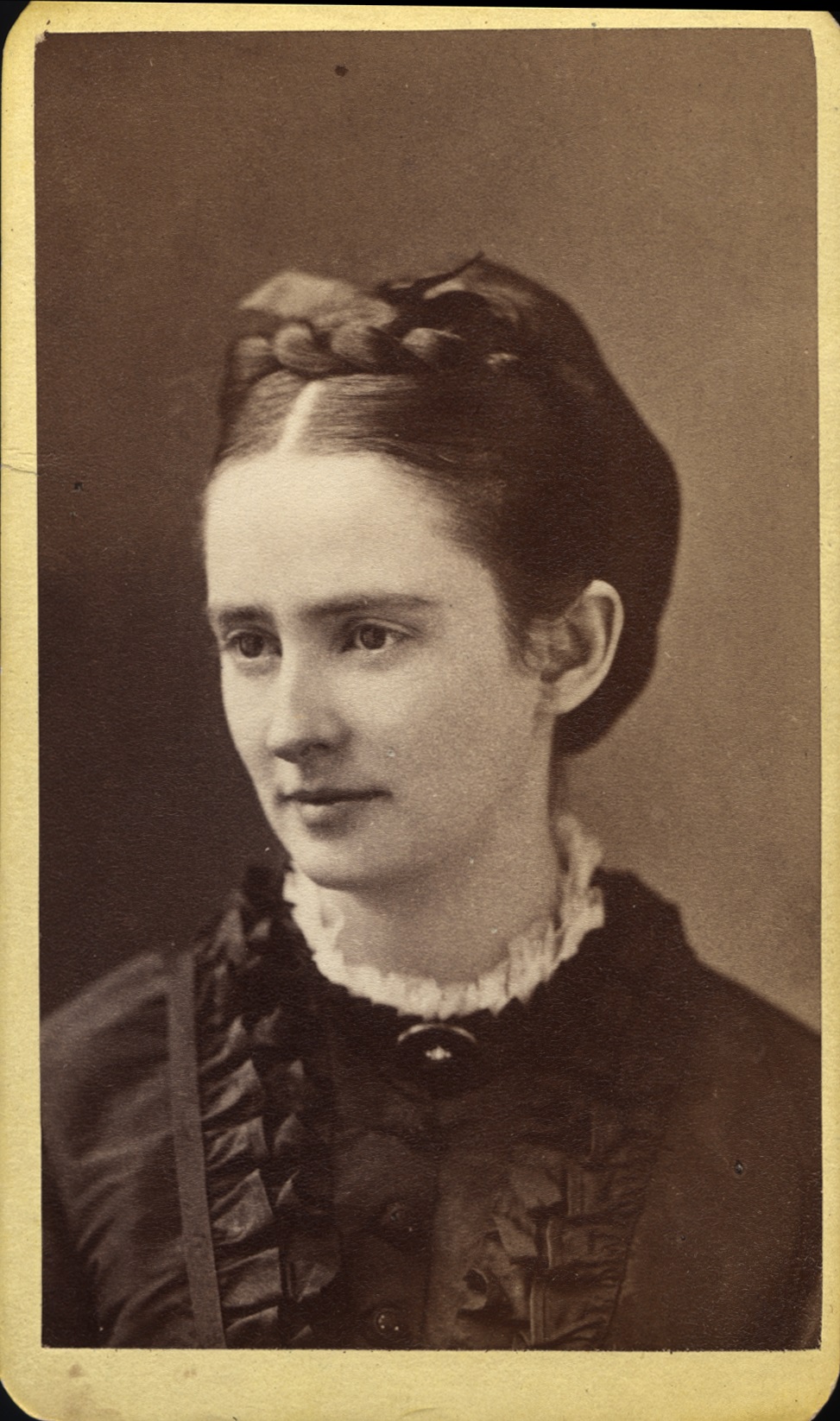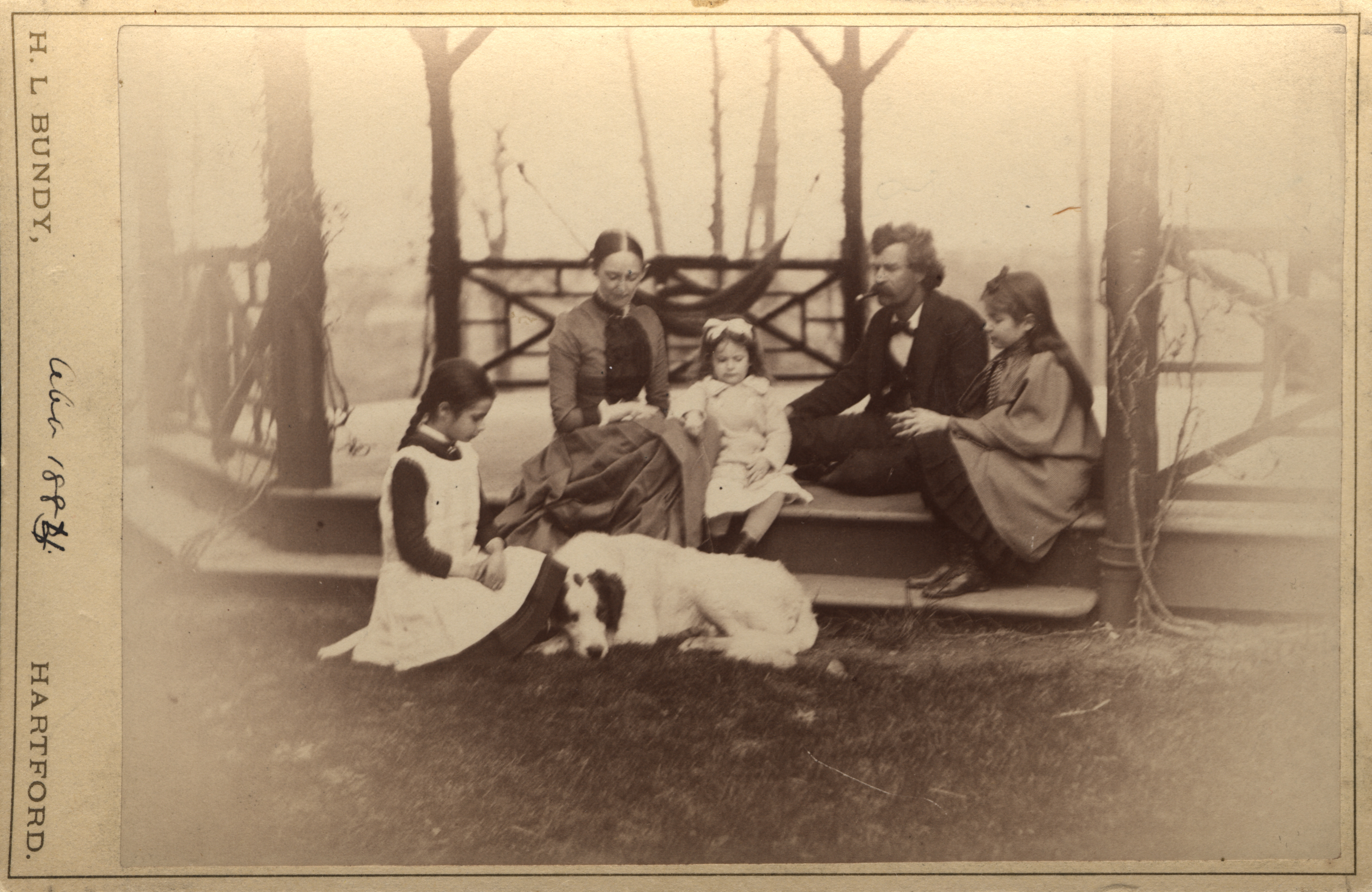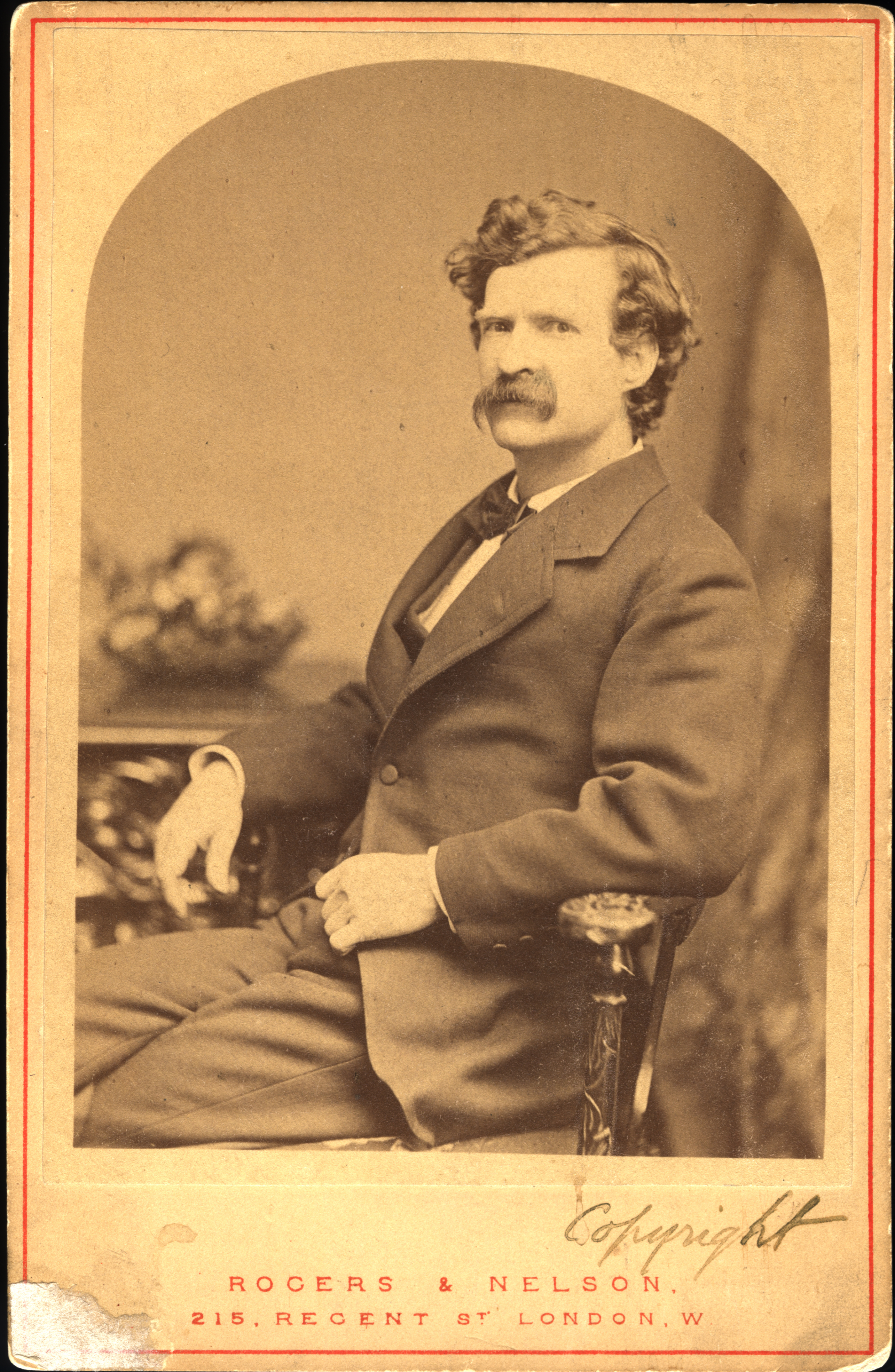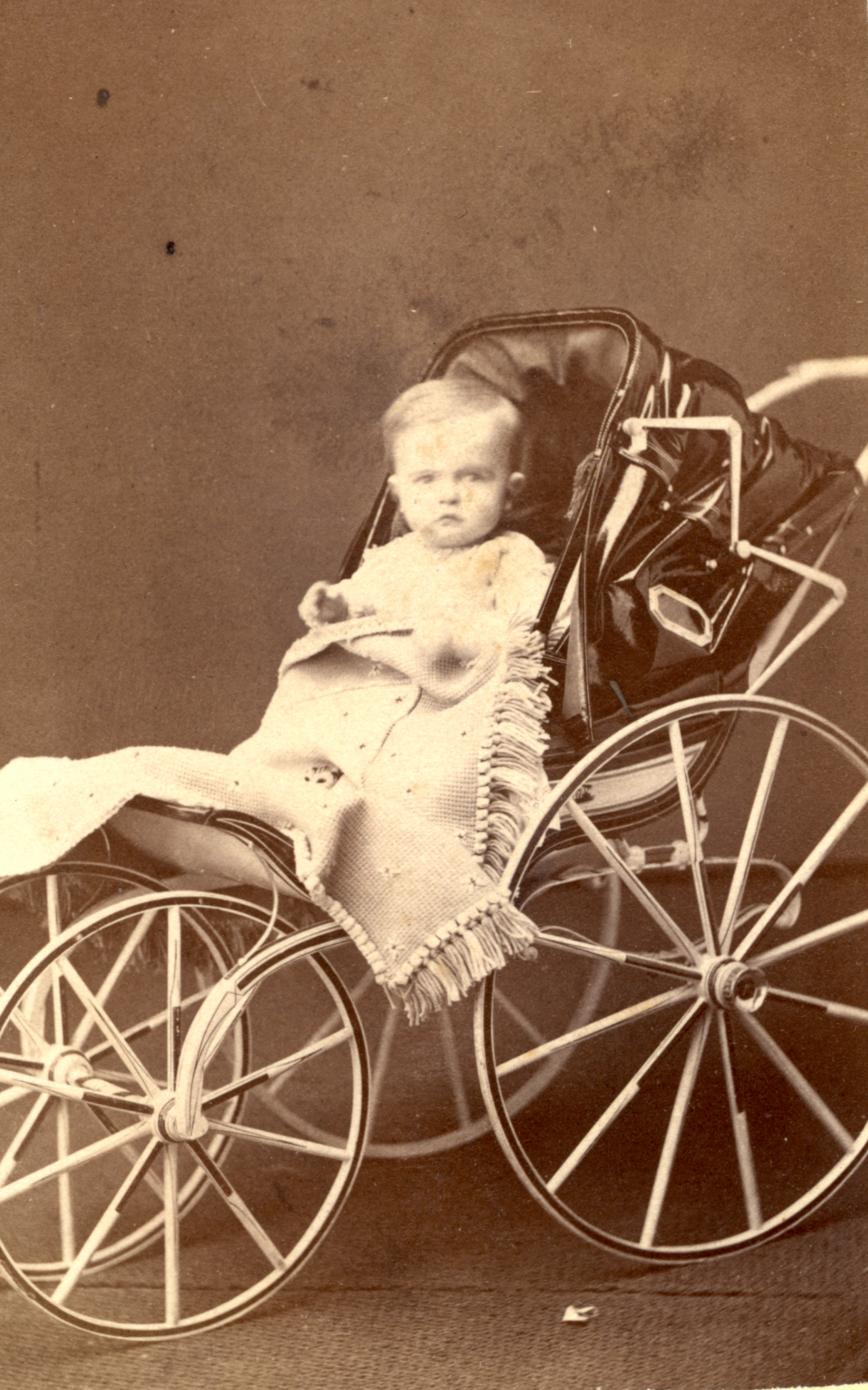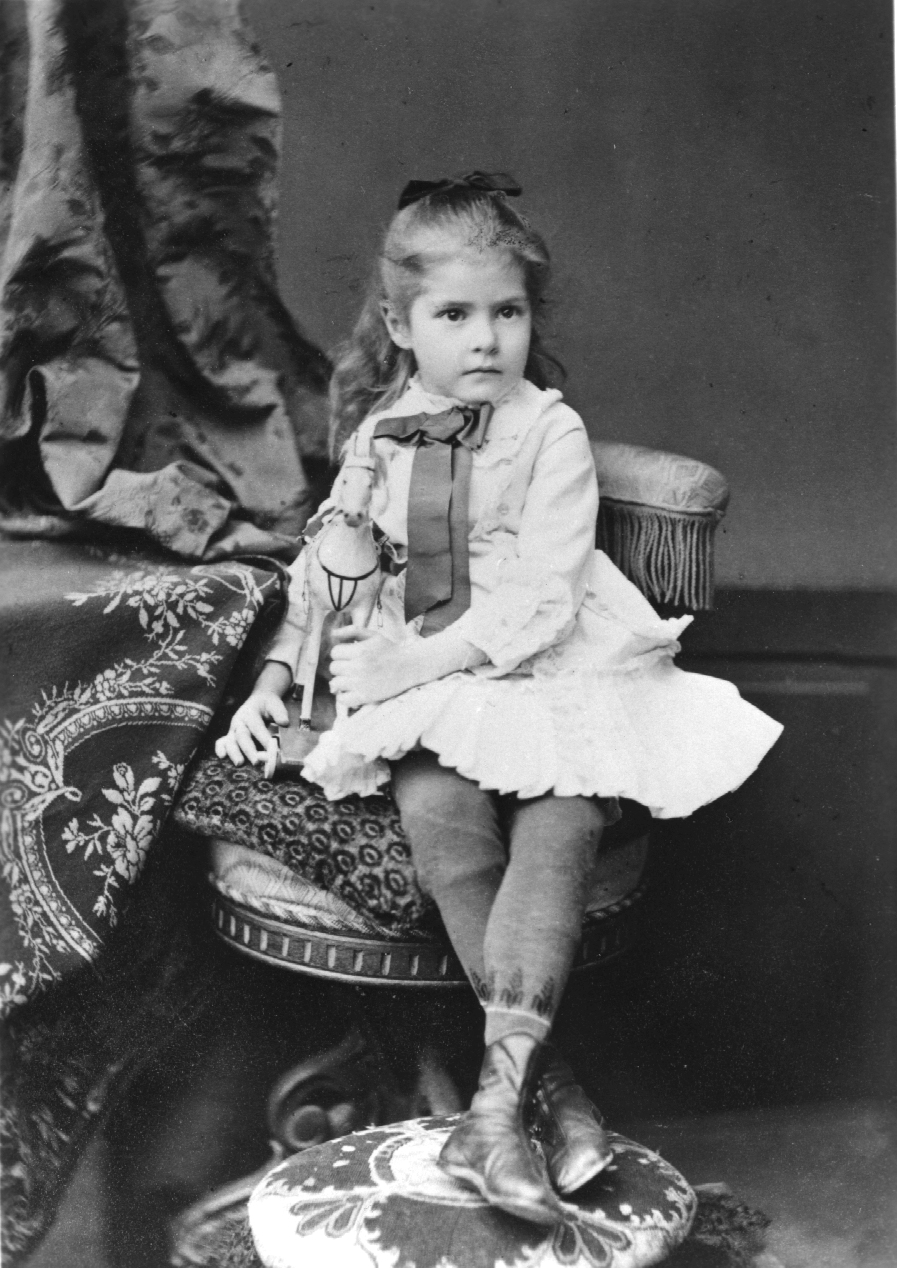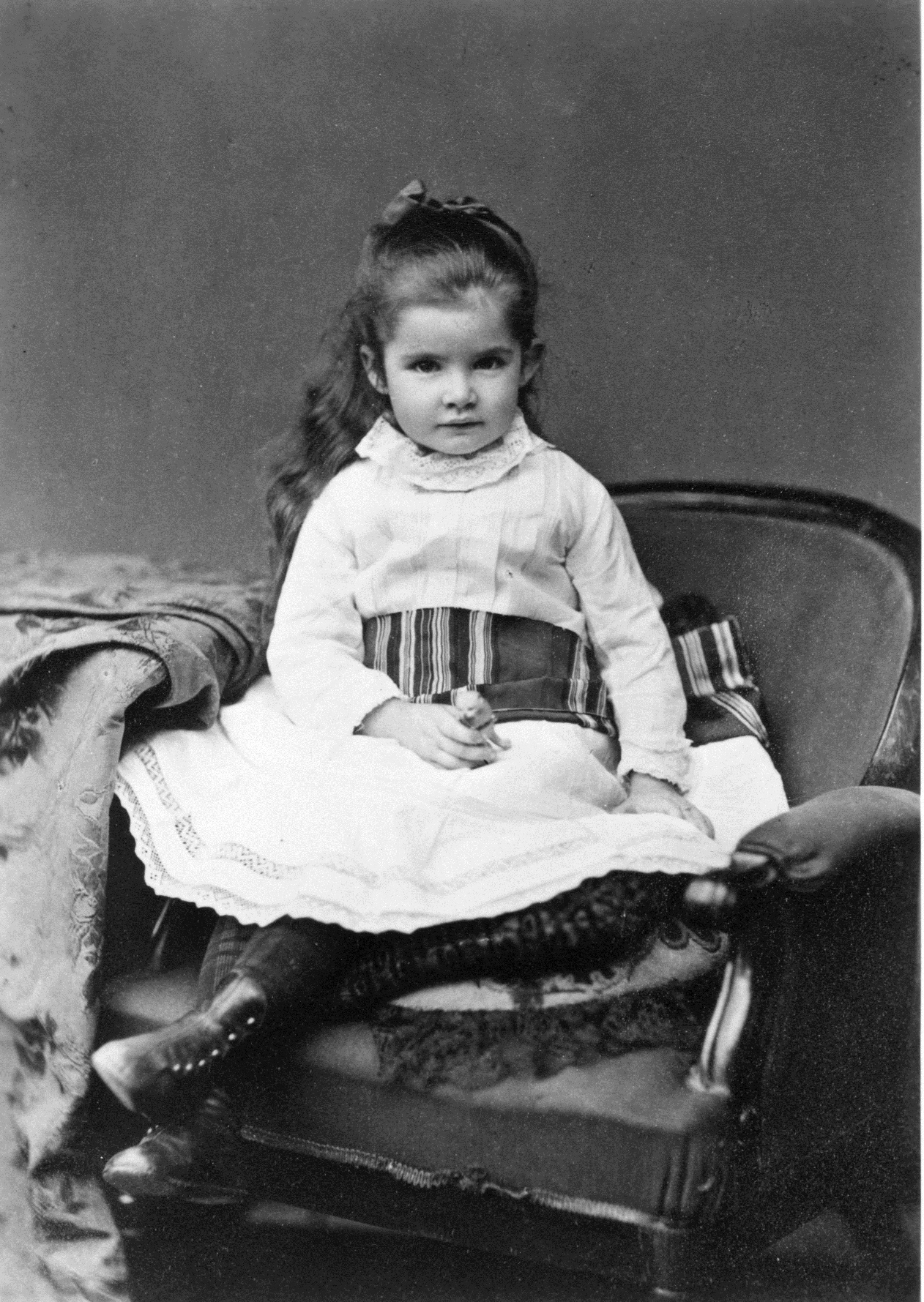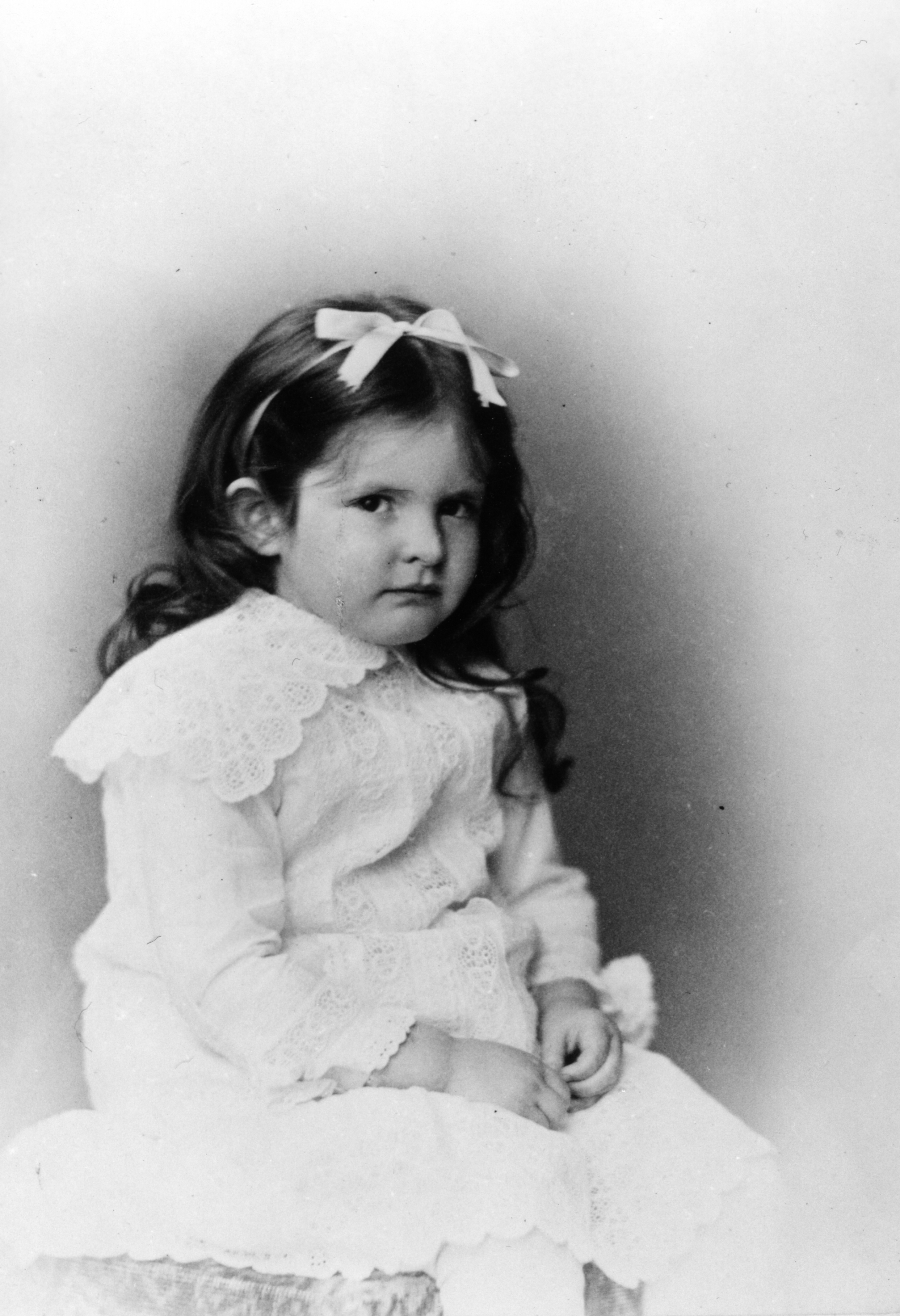Olivia Louise Langdon (1845-1904)
Olivia Langdon Clemens was born Olivia Louise Langdon on November 27, 1845, in Elmira, New York, the daughter of Jervis and Olivia Langdon. She had a younger brother, Charles, and an adopted older sister, Susan. Olivia was called “Livy” by her friends and family, and by her husband, Samuel L. Clemens, whom she married on Feb. 2, 1870. She was educated at home with private tutors and also took classes at Elmira Female College (Elmira College today).
Looking for a water cure
Olivia struggled with her health throughout her life. For much of her teenage years, Olivia was an invalid. Today scholars believe she may have contracted Pott’s disease–a form of tuberculosis of the spine. Throughout her life, Olivia would seek rest and cures for her ailments. At age 14, Olivia roomed at Gleason’s Water Cure in Elmira along with her friend Alice Hooker, daughter of women’s suffrage activist Isabella Beecher Hooker of Hartford. The facility was run by Drs. Silas and Rachel Gleason and was located just downhill from Quarry Farm.
The “water cure” was based on hydropathy, the Victorian idea that water had curative powers.Treatments through ingestion, immersion, and mists or sprays included steam saunas and cold-water therapy. Elizabeth Cady Stanton and Susan B. Anthony took the cure, as did other upper-class women who could afford the $7- to $10-per-week charge for live-in treatments, and could spend weeks or months away from home.
The Gleasons held the belief that women could treat other women more effectively than men could, and that women tended to recuperate better when surrounded and supported by other women. Rachel Gleason delivered all four of the Clemens children, and Samuel Clemens called her “the almost divine Mrs. Gleason.” She was the fourth woman in United States history known to practice medicine with a degree, is recognized not only for her work at the Water Cure and as an advocate for women’s health, but also with a role in the beginnings of modern gynecology. She also wrote a book on home treatments called Talks to my Patient; Hints on Getting Well and Keeping Well and lectured widely.
The Langdons: A Progressive Family
Elmira, New York’s location near the intersection of the Chemung and Erie canals and later a major railroad depot made it a center of commerce, industry and culture in which Olivia’s father, Jervis Langdon was very successful. His business was timber and coal, and the Langdons were one of the leading families of the community, both financially and in terms of their idealism. Olivia’s intellectual and progressive upbringing would be a major influence on Samuel Clemens and his writing. Olivia was raised in Elmira’s hotbed of reform. Her father participated in the Underground Railroad and they socialized with leading doctors, theologians, and suffragists of the time.
There is evidence to support the idea that Olivia’s parents often worked as equals in a time when women were rarely accepted in the public sphere. Olivia’s mother was socially active through charities and women’s social organizations, and an active supporter of abolition and temperance. Olivia’s aunt was a pioneering itinerant teacher at a time when women were just beginning to be allowed to graduate with college degrees considered to be equal to those of men.
Samuel Clemens and Olivia Langdon: A Love Story
Samuel Clemens entered Olivia’s life in the time not long after her health began to improve. Olivia’s younger brother, Charles, was a fellow passenger with Clemens on the Quaker City in 1867. According to legend, Charles showed Clemens a miniature painting of his older sister on ivory, and Clemens fell in love with her on the spot.
After they returned from the tour, Charles invited Clemens to dine with the Langdon family in New York City. Little is known of that first meeting. A few days later, on New Year’s Day, Clemens called on Olivia at the house where she was staying. Rather than stay the socially acceptable 15 minutes, he stayed for 12 hours. During the summer of 1868 the Langdons invited Clemens to visit their home in Elmira, during which time Clemens’ feelings for Olivia deepened. Although it took some time, eventually Olivia reciprocated Samuel’s devotions. Their courtship, marriage and love for one another are well documented in the correspondence they exchanged throughout their marriage.
Like the relationship between her own parents, Olivia and Samuel’s marriage was very much one of equals. Deeds to their house and land in Hartford were in Olivia’s name. For a time Mark Twain’s copyrights were transferred to her to preserve the family income from creditors. Olivia was also an active participant in her husband’s writing. He left pages of manuscript by her bedside for her to read and review. He often, though not always, accepted her suggestions.
Reminiscences by Susy, Clara and Samuel himself, give us insight into how the editing process worked; the children would sit by Olivia as she read Samuel’s writing, and she would turn down the pages when she saw something that needed more work. Susy and Clara would cry out because their Mama wanted to cut out some of the parts the girls thought were most “delectable.” Clemens remembered in his autobiography how he liked to insert phrases and incidents which he knew Olivia would not approve – just to see her reaction.
The Clemenses' Family Life
Since Samuel did not enjoy the details of domestic life, he was more than happy to have Olivia take a leading role in the workings of the household. Though she suffered numerous bouts of illness she remained the emotional center and strength of the family. It was Olivia who worked on details of managing the house; it was Olivia who was the primary caregiver (along with the nursemaids, lady’s maids, and governesses the family employed) of the couple’s three daughters; and she was indisputably held in high esteem by everyone she met. Both Clemens and the children described her as being the firm, yet gentle, moral center of the household. That being said, spanking was not unheard of in the Clemens household as a means of discipline both Samuel and Olivia used as a last resort..
After Susy’s death in 1896 it was Olivia who refused to live in the Hartford home where they had raised their children. The family’s grief was intensified by Jean’s struggle with epilepsy. In her 1931 memoir My Father: Mark Twain, Clara reminisced that no one in the family smiled for a long time. In the years after Susy’s death, the family lived a somewhat nomadic existence mostly in Europe. The perpetual travel and Jean’s need for ongoing care took its toll on Olivia’s health. Clemens described it as “five years of constant anxiety and periodical shocks and frights.” In August 1902, Olivia suffered what was probably a heart attack. She had chest pain and difficulty breathing. Her health continued to deteriorate.
Olivia's Deteriorating Health and Death
Late in 1903 the family decided to travel to Florence, Italy, where they thought the pleasant climate would improve Olivia’s health. Samuel was kept separate from her for much of her last months: she was supposed to be kept quiet and unexcited, so he would send little love notes to her twice a day and make brief visits to sit with her and give her kisses. Clara and their longtime maid, Katy Leary, spent the most time with Olivia. Clara would make sure that no news of Jean’s illness was shared with their mother, to keep her from worrying. Jean, in turn, was not allowed to hear about her mother’s failing health. Clara suffered terribly as this intermediary.
Olivia died on June 5, 1904. Her death would leave a hole in the family that neither of his daughters or friends could fill. In their memoirs and letters, Clara, Katy, and particularly the stricken Samuel Clemens himself,– comment on their inability to take part in everyday life, travel, and writing after Olivia’s death.

